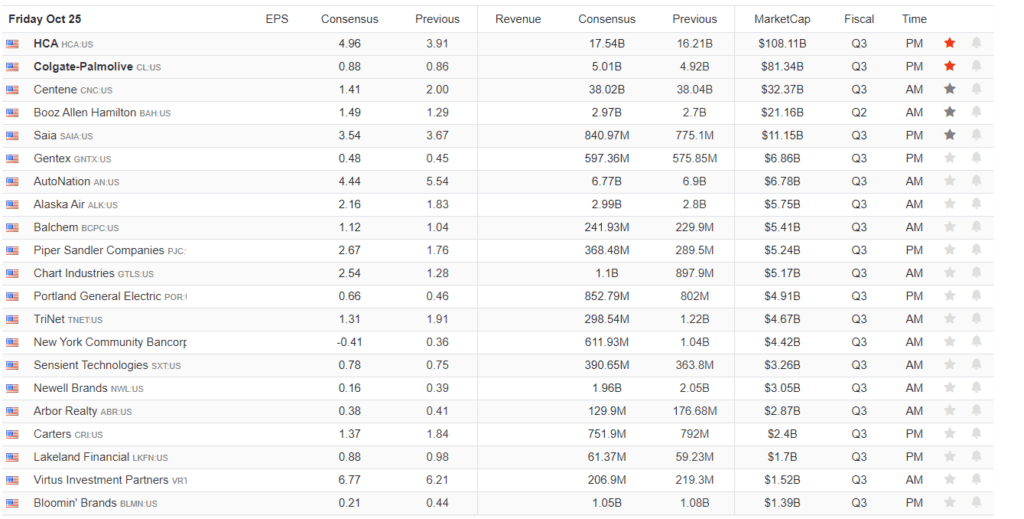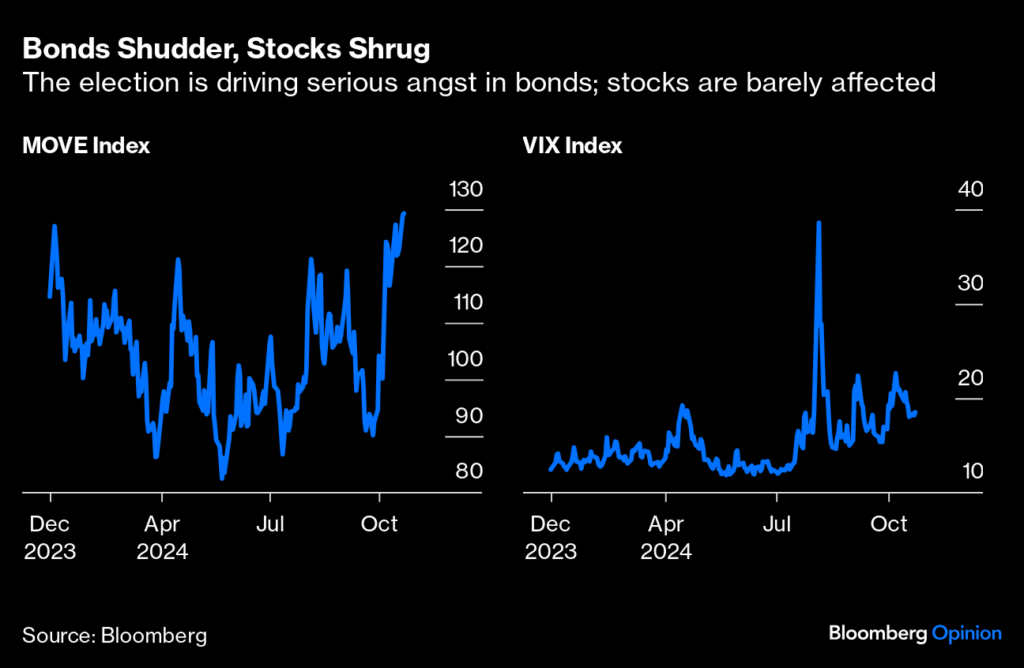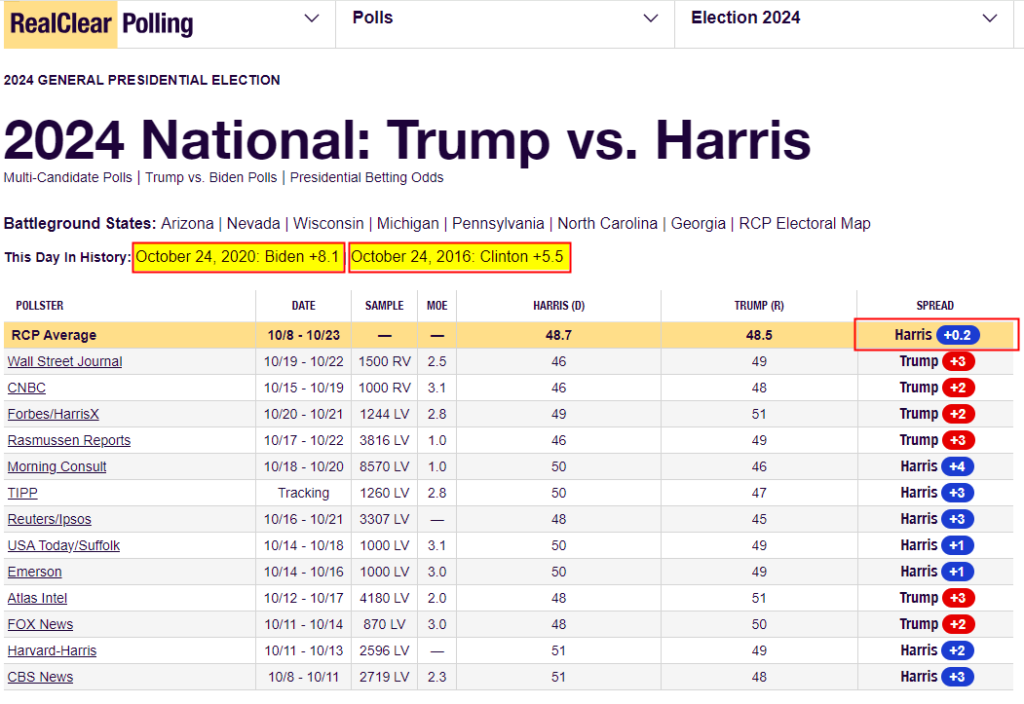What a difference two weeks make. Despite a 15% gain on Thursday, Tesla shares are back to where they were two weeks ago. The stock fell roughly 15% when its Cybercab robo-taxi presentation was a dud. As further attestation to the problems besetting Tesla’s robo-taxi program, shares of Uber and Lyft rose 10%. Today, shares of Uber and Lyft trade lower as hope for Tesla’s robo-taxi program is revived. Despite numerous setbacks to its robo-taxi production, Elon Musk believes robo-taxis are potentially a $5 to $7 trillion opportunity. On the earnings conference call, Musk provided an optimistic outlook.
I do feel confident of Cybercab reaching volume production in ’26, just starting production, reaching volume production in ’26. And that should be substantial, but we’re aiming for at least 2 million units a year of Cybercab– Elon Musk
As investors, we can bet on robo taxi success with Tesla shares or against its progress via Uber. To put a shorter-term technical context to the decision, we share the analysis from SimpleVisor below. The top blue line charts the price ratio of Tesla versus Uber. Over the last year, as demonstrated by the lower ratio, Uber has outperformed Tesla. The second graph from the top is a proprietary trading signal we created. Like the MACD and stochastic graphs below it, our model signals that Tesla is set to outperform Uber. Accordingly, given the immense profits from robo-taxis, this analysis argues that Tesla is likely to gain support from shareholders for its robo-taxi program.
What To Watch
Earnings
Economy
Market Trading Update
As noted yesterday, the market broke out of the “rising wedge pattern” to the downside. This likely begins the correction/consolidation process heading into the election. With traders largely offside, having chased stocks over the last week, reversing some of those trades seems logical heading into the election in two weeks.
Yesterday, the market held the 20-DMA, which continues to act as support with the MACD “sell signal” triggered. We suspect the market may attempt a rally to the bottom of the rising trendline and then turn lower into the election as portfolio managers “derisk” portfolios for the possibility of a contested outcome. Such would likely coincide with a test of the 50-DMA, which would get markets decently oversold short-term. The 100-DMA slightly below that is certainly possible. However, such a correction would be ideal for a year-end rally as portfolio managers try to make up performance for the year and buybacks return at a robust $6 billion/day clip.
The bullish momentum remains, although it is diminishing a bit, which suggests remaining long-biased equity exposure for now. However, such does NOT mean that you should not continue a process of risk management along the way.
Stock And Bond Volatility
One reason for the recent increase in bond yields is that the odds of Trump winning and a Republican sweep of Congress are growing. Presumably, according to the media, such a scenario would foster tax cuts and increased deficit spending. It’s not just yields that highlight this concern, but volatility. The Bloomberg graphs below show the implied volatility for the stock and bond markets. Bond market volatility (MOVE) is the highest it’s been this year. Yet, despite the concerns, stock market volatility has risen but remains well off prior levels.
The election and, more importantly, future fiscal policies are unknown. Therefore, we need to ask why the bond market is so concerned about the election and, ultimately, changes in fiscal policies while the stock market is sanguine.
Election Handicapping Is Fraught with Risks
As we previously noted, the bond market narrative driving yields higher is that a Trump victory and Republican sweep of Congress will result in higher government spending. While that is highly debatable, we instead focus on the polls that point to a Trump victory. The table below from Real Clear Politics is simply an average of national polls. Harris has a slight lead, with the underlying individual polls mixed and incredibly close. More importantly, focus on the yellow highlighted section “This day in history.”
On this day in 2020, President Biden had a big lead over Trump. On this day in 2016, Hillary Clinton had a decent lead over Trump. Biden went on to win by a slim margin in 2020, and Clinton, despite being the odds-on favorite, lost. Bottom line: polls can be misleading. Thus, making investments based on said polls is fraught with risk. Furthermore, market assumptions on what a president may or may not do are often proven false. For gamblers and speculators, the environment is ripe for trading. Investors should sit back, wait to see who wins, and give the new president and Congress time to see what they will and won’t enact.
Tweet of the Day
“Want to achieve better long-term success in managing your portfolio? Here are our 15-trading rules for managing market risks.”









